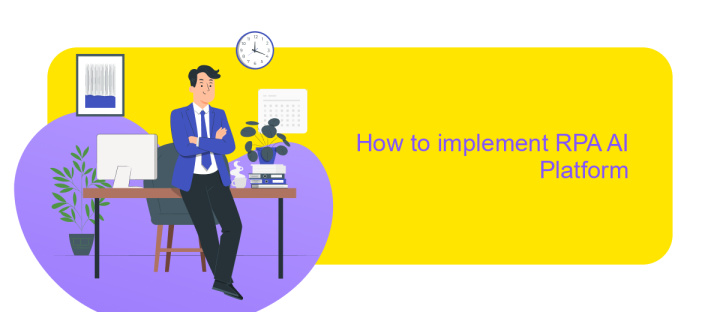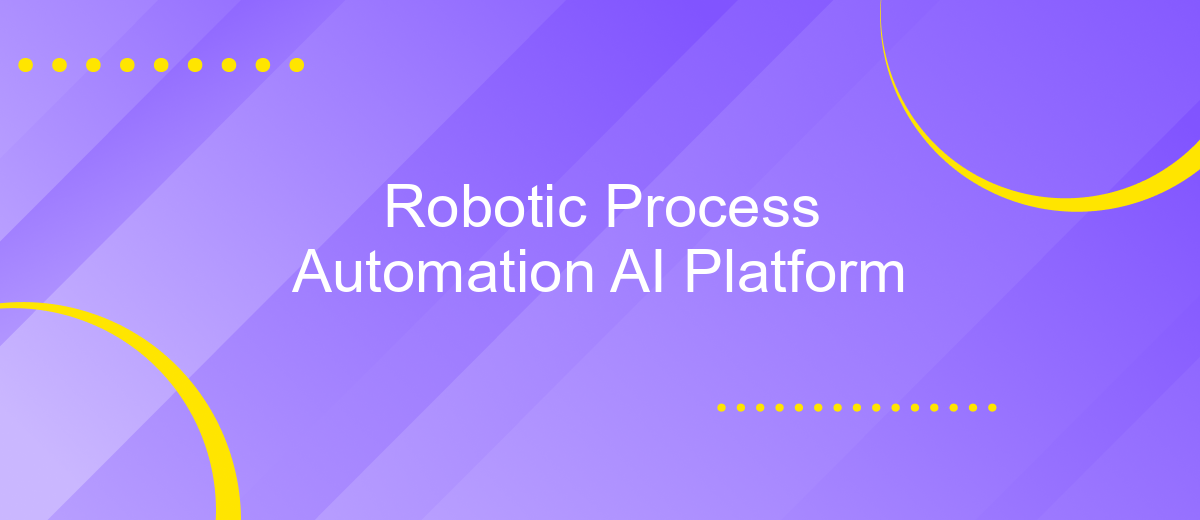Robotic Process Automation AI Platform
Robotic Process Automation (RPA) AI platforms are revolutionizing the way businesses operate by automating repetitive tasks and enhancing efficiency. These platforms leverage artificial intelligence to streamline workflows, reduce human error, and optimize resource allocation. As organizations increasingly adopt RPA AI solutions, they are experiencing significant improvements in productivity, cost savings, and overall operational performance.
Introduction to Robotic Process Automation (RPA)
Robotic Process Automation (RPA) is revolutionizing the way businesses operate by automating repetitive and mundane tasks. This technology uses software robots, or "bots," to mimic human actions and interact with digital systems. By implementing RPA, organizations can significantly reduce operational costs, enhance accuracy, and improve overall efficiency.
- Cost Reduction: Automating tasks cuts down on labor costs.
- Accuracy: Bots reduce the risk of human error.
- Efficiency: Automation speeds up processes and increases productivity.
- Scalability: Easily scale operations without additional human resources.
- Compliance: Ensures adherence to regulatory standards.
As businesses strive to stay competitive, RPA offers a strategic advantage by freeing up human employees to focus on more complex and value-added activities. The integration of RPA into business processes not only optimizes performance but also lays the groundwork for future advancements in artificial intelligence and machine learning.
What is RPA AI Platform?

Robotic Process Automation (RPA) AI Platform is a comprehensive solution designed to streamline and automate repetitive tasks through intelligent algorithms. By leveraging machine learning and artificial intelligence, it enables businesses to improve efficiency, reduce errors, and save time. The platform is capable of handling a variety of processes such as data entry, invoice processing, and customer service, allowing human employees to focus on more strategic activities.
One of the key features of an RPA AI Platform is its ability to integrate seamlessly with existing systems and applications. Tools like ApiX-Drive facilitate these integrations by offering a user-friendly interface to connect various software and automate workflows without the need for coding. This ensures that businesses can quickly implement RPA solutions and start reaping the benefits almost immediately. Overall, an RPA AI Platform is an essential tool for any organization looking to enhance productivity and operational efficiency in today's competitive landscape.
Benefits of using RPA AI Platform

Implementing a Robotic Process Automation (RPA) AI Platform can significantly enhance operational efficiency and accuracy in various business processes. By automating repetitive and time-consuming tasks, organizations can focus more on strategic activities, leading to increased productivity and cost savings.
- Improved Efficiency: Automation reduces the time required to complete tasks, leading to faster turnaround times and higher throughput.
- Cost Reduction: By minimizing manual intervention, businesses can lower operational costs and allocate resources more effectively.
- Enhanced Accuracy: RPA AI platforms eliminate human errors, ensuring consistent and reliable outcomes.
- Scalability: These platforms can easily scale to handle increased workloads without additional staffing.
- Compliance and Auditability: Automated processes ensure adherence to regulatory standards and provide a clear audit trail.
Incorporating an RPA AI Platform into your business strategy not only streamlines operations but also provides a competitive edge. As companies continue to navigate the complexities of the modern business environment, leveraging advanced automation technologies becomes essential for sustained growth and innovation.
How to implement RPA AI Platform

Implementing an RPA AI Platform involves a series of strategic steps to ensure seamless integration and optimal performance. Initially, it is crucial to conduct a comprehensive assessment of your current processes to identify areas where automation can be most beneficial. This helps in setting clear objectives and expectations for the RPA implementation.
Next, selecting the right RPA tools and technologies is paramount. Choose a platform that aligns with your business needs and offers scalability, user-friendliness, and robust AI capabilities. Additionally, involving key stakeholders from the onset ensures that the solution meets the diverse needs of the organization.
- Conduct a thorough process assessment
- Select suitable RPA tools and technologies
- Engage key stakeholders
- Develop a detailed implementation plan
- Monitor and optimize the RPA system continuously
Finally, developing a detailed implementation plan with clear milestones and timelines is essential. Continuous monitoring and optimization of the RPA system will help in addressing any issues promptly and enhancing the overall efficiency of the automated processes. By following these steps, organizations can successfully implement an RPA AI Platform that drives innovation and operational excellence.
Case studies and success stories of RPA AI Platform
One notable success story involves a leading financial institution that implemented an RPA AI Platform to streamline its loan processing system. By integrating ApiX-Drive, the bank was able to automate data entry, validation, and document management, significantly reducing the processing time from days to mere hours. The seamless integration allowed for real-time data synchronization across multiple systems, resulting in a 40% increase in operational efficiency and a 25% reduction in human error. This transformation not only enhanced customer satisfaction but also freed up employees to focus on more strategic tasks.
Another compelling case study comes from a global logistics company that faced challenges in managing its supply chain operations. Utilizing an RPA AI Platform, the company automated repetitive tasks such as order processing, inventory management, and shipment tracking. With the help of ApiX-Drive, they achieved seamless integration with their existing ERP and CRM systems. This led to a 50% reduction in order processing time and a 30% increase in overall productivity. The automation also provided valuable insights through data analytics, enabling better decision-making and improved service delivery.
FAQ
What is Robotic Process Automation (RPA) AI Platform?
How does RPA AI Platform benefit businesses?
What types of tasks can be automated using RPA AI Platform?
How can I integrate RPA AI Platform into my existing systems?
Is it necessary to have technical expertise to implement RPA AI Platform?
Apix-Drive is a simple and efficient system connector that will help you automate routine tasks and optimize business processes. You can save time and money, direct these resources to more important purposes. Test ApiX-Drive and make sure that this tool will relieve your employees and after 5 minutes of settings your business will start working faster.

